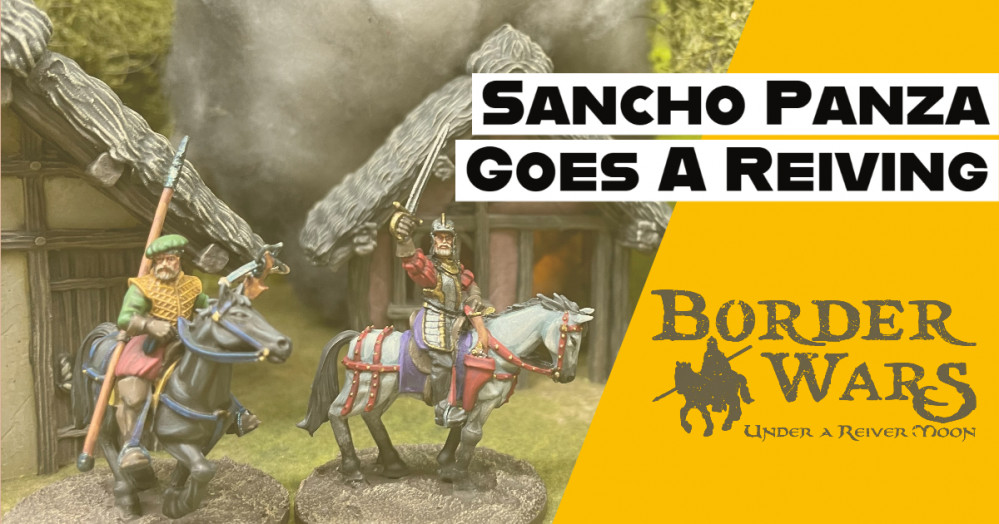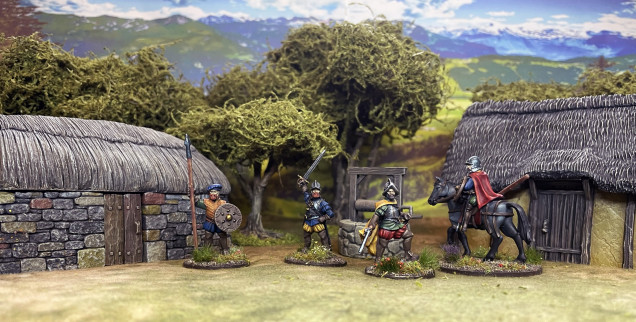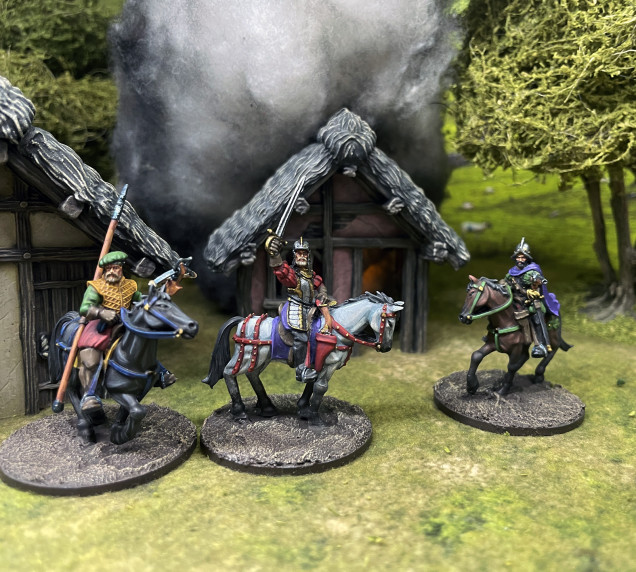
Sancho Panza goes to the Border Wars
What are Border Reivers
Border Reivers were raiders along the Anglo-Scottish border from the late 13th century to the beginning of the 17th century. They included both Scottish and English people, and they raided the entire border country without regard to their victims’ nationality. Their heyday was in the last hundred years of their existence, during the time of the House of Stuart in the Kingdom of Scotland and the House of Tudor in the Kingdom of England.
Background
Scotland and England were frequently at war during the late Middle Ages. During these wars, the livelihood of the people on the Borders was devastated by the contending armies. Even when the countries were not formally at war, tension remained high, and royal authority in either or both kingdoms was often weak, particularly in remote locations. The difficulty and uncertainties of basic human survival meant that communities and/or people kindred to each other would seek security through group strength and cunning. They would attempt to improve their livelihoods at their nominal enemies’ expense, enemies who were frequently also just trying to survive. Loyalty to a feeble or distant monarch and reliance on the effectiveness of the law usually made people a target for depredations rather than conferring any security.
There were other factors which may have promoted a predatory mode of living in parts of the Borders. A system of partible inheritance is evident in some parts of the English side of the Borders in the sixteenth century. By contrast to primogeniture, this meant that land was divided equally among all sons following a father’s death; it could mean that the inheriting generation held insufficient land on which to survive. Also, much of the Border region is mountainous or open moorland, unsuitable for arable farming but good for grazing. Livestock was easily rustled and driven by mounted reivers who knew the country well. The raiders might also remove easily portable household goods or valuables, and take prisoners for ransom.
The attitudes of the English and Scottish governments towards the border families alternated from indulgence and even encouragement, as these fierce families served as the first line of defence against invasion across the border, to draconian and indiscriminate punishment when their lawlessness became intolerable to the authorities.
Reive, a noun meaning raid, comes from the Middle English (Scots) reifen. The verb reave meaning “plunder, rob”, a closely related word, comes from the Middle English reven. There also exists a Northumbrian and Scots verb reifen. All three derive from Old English rēafian which means “to rob, plunder, pillage”. Variants of these words were used in the Borders in the later Middle Ages. The corresponding verb in Dutch is “(be)roven”, and “(be)rauben” in German.
The earliest use of the combined term ‘border reiver’ appears to be by Sir Walter Scott in his anthology Minstrelsy of the Scottish Border. George Ridpath (1716?–1772), the author of posthumously-published The Border-History of England and Scotland, deduced from the earliest times to the union of the two crowns (London, 1776), referred not to ‘border reivers’ but only to banditti.
Nature
The reivers were both English and Scottish and raided both sides of the border impartially, so long as the people they raided had no powerful protectors and no connection to their own kin. Their activities, although usually within a day’s ride of the border, extended both north and south of their main haunts. English raiders were reported to have hit the outskirts of Edinburgh, and Scottish raids were reported to have reached as far south as Lancashire and Yorkshire. The main raiding season ran through the early winter months, when the nights were longest and the cattle and horses fat from having spent the summer grazing. The numbers involved in a raid might range from a few dozen to organised campaigns involving up to three thousand riders.
When raiding, or riding, as it was termed, the reivers rode light on hardy nags or ponies renowned for the ability to pick their way over the boggy moss lands (see: Galloway pony, Hobelar). The original dress of a shepherd’s plaid was later replaced by light armour such as brigandines or jacks of plate (a type of sleeveless doublet into which small plates of steel were stitched), and metal helmets such as burgonets or morions; hence their nickname of the “steel bonnets”. They were armed with light lances and small shields, and sometimes also with longbows, or light crossbows, known as “latches”, or later on in their history with one or more pistols. They invariably also carried swords and dirks.
Borderers as soldiers
Border reivers were sometimes in demand as mercenary soldiers, owing to their recognised skills as light cavalry. Reivers sometimes served in English or Scottish armies in the Low Countries and in Ireland, often to avoid having harsher penalties enacted upon themselves and their families. Reivers fighting as levied soldiers played important roles in the battles at Flodden and Solway Moss. After meeting one reiver (the Bold Buccleugh), Queen Elizabeth I is quoted as having said that “with ten thousand such men, James VI could shake any throne in Europe.”
These borderers proved difficult to control, however, within larger national armies. They were already in the habit of claiming any nationality or none, depending on who was asking and where they perceived the individual advantage to be. Many had relatives on both sides of Scottish-English conflicts despite prevailing laws against international marriage. They could be badly behaved in camp, seeing fellow soldiers as sources of plunder. As warriors more loyal to clans than to nations, their commitment to the work was always in doubt. At battles such as Ancrum Moor in Scotland in 1545, borderers changed sides in mid-combat to curry favour with the likely victors. At the Battle of Pinkie Cleugh in 1547, an observer (William Patten) noticed Scottish and English borderers chatting with each other, then putting on a spirited show of combat once they knew they had been spotted.













































































Leave a Reply